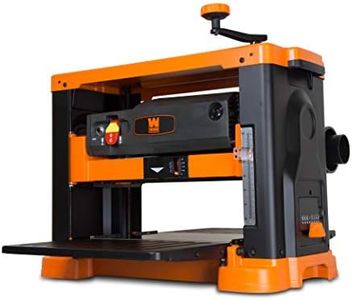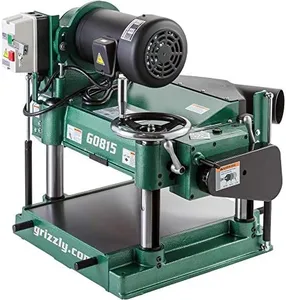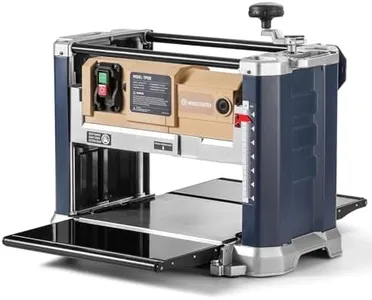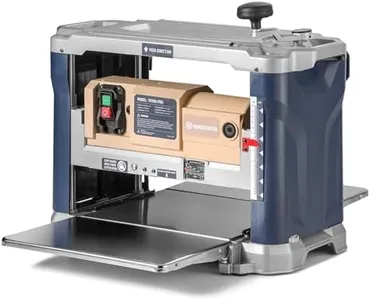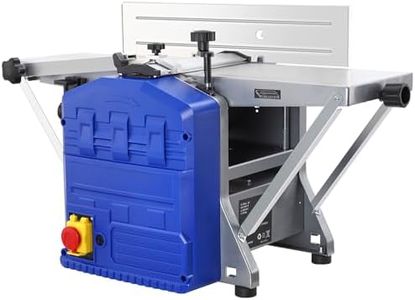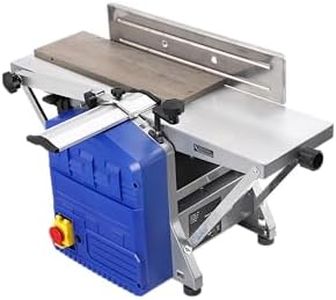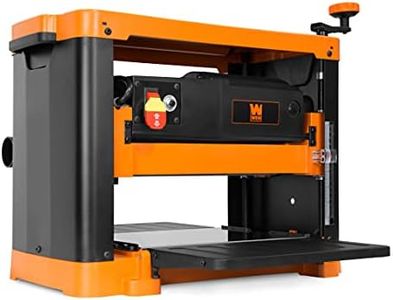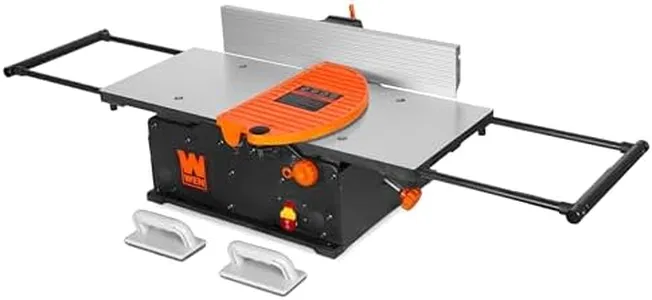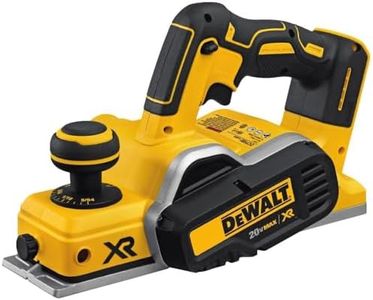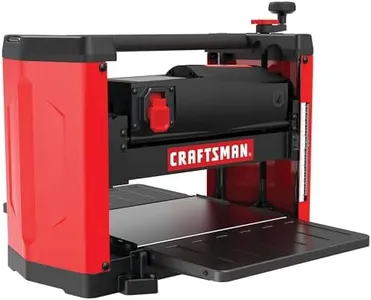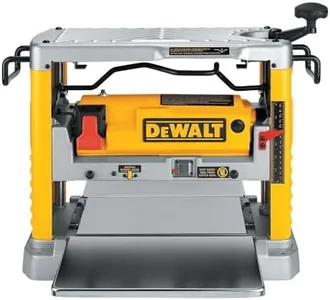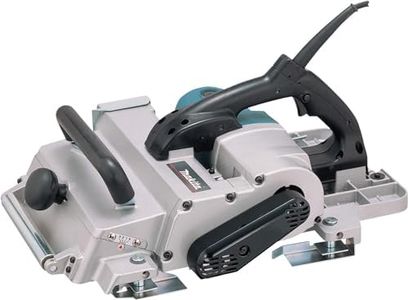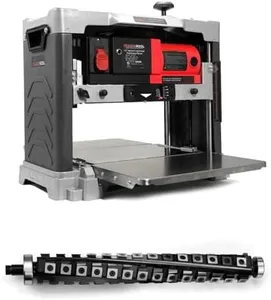10 Best Benchtop Wood Planers 2025 in the United States
Our technology thoroughly searches through the online shopping world, reviewing hundreds of sites. We then process and analyze this information, updating in real-time to bring you the latest top-rated products. This way, you always get the best and most current options available.

Our Top Picks
Winner
WEN Thickness Planer, Two Speed, 13-Inch Spiral Blade, Benchtop (PL1337)
Most important from
1477 reviews
The WEN PL1337 is a solid benchtop wood planer that suits hobbyists and small workshop users who need to dimension boards efficiently. It handles boards up to 13 inches wide and 6 inches thick, which is generous for most home woodworking projects. Its 15-amp motor runs the spiral cutterhead at 10,000 RPM, producing a smooth finish with 26 HSS blades that are staggered and rotatable. This spiral cutterhead design helps reduce tear-out, making it easier to get clean results. A standout feature is the two-speed feed rate: 26 feet per minute for faster stock removal and 16 feet per minute when you want a finer finish.
The maximum cutting depth per pass is 0.13 inches, typical for this class of planer, allowing for controlled material removal. Dust collection is versatile with a combo 2.5-inch and 4-inch port, which helps keep your workspace cleaner when connected to a vacuum or dust collection system. Weighing 69 pounds, it’s stable but not very portable, so it’s best suited for a dedicated workshop space. Some users might find it a bit bulky if space is tight.
It comes with useful extras like a depth stop, onboard material removal gauge, wrench storage, and return rollers to help feed boards smoothly. The two-year warranty adds confidence in the product’s durability. Although not the lightest or smallest model, the WEN PL1337 strikes a strong balance of power, precision, and finish quality among benchtop planers in its price range.
Most important from
1477 reviews
Grizzly Industrial G1021Z - 15" 3 HP Planer with Cabinet Stand
Most important from
7 reviews
The Grizzly Industrial G1021Z is a robust benchtop wood planer featuring a powerful 3 HP motor, making it suitable for heavy-duty woodworking tasks. With a cutting width of 15 inches and a cutting depth of 0.13 inches, it is well-suited for handling large wood pieces and achieving smooth, precise finishes. The cutterhead operates at a speed of 5000 RPM, ensuring efficient and clean cuts, while the variable feed rate of 16 and 20 feet per minute offers flexibility for different types of wood and desired finish quality.
The inclusion of three high-speed steel (HSS) knives and a knife setting tool enhances the planer's utility, allowing for easy maintenance and consistent performance. Constructed with cast iron, the planer is durable, but it is also quite heavy, with a shipping weight of approximately 540 pounds, which may pose challenges in terms of portability. Ideal for a stationary setup in a workshop, this tool is not easily moved around.
One notable drawback is the apparent lack of a dust collection system, which could result in a messier workspace and require additional cleanup efforts. Additionally, while the planer is corded and does not require batteries, the absence of modern features like digital controls or advanced dust collection might be a downside for some users.
Most important from
7 reviews
JET JWP-13BT, 13-Inch Helical-Style Benchtop Planer, 120V 1PH (722130) and Flip Top Benchtop Machine Table (728200)
Most important from
166 reviews
The JET JWP-13BT is a solid choice for a benchtop wood planer, especially if you want clean, smooth cuts. It features a 13-inch cutting width which is standard for many woodworking projects, and its helical-style cutter head uses easy-to-change blades that help reduce tear-out and make your boards look nicer. The 2-horsepower motor is quite powerful for a machine this size, spinning the cutter head at 10,000 RPM, which means it can handle harder woods and thicker boards with less effort. The precision-machined cast iron bed helps keep your wood flat while planing, which is great for reducing uneven spots or snipe (those unwanted dips at the ends of boards).
One unique feature is the included flip top benchtop machine table, which not only provides a spacious 20x25 inch work surface but also allows you to bolt another machine onto the other side, saving space and increasing versatility. The ergonomic handles make it easy to switch between tools on the table. If dust collection is a priority, this model doesn’t highlight any advanced system, so you might need an external vacuum setup to keep your workspace clean. Portability is decent; the planer is designed as a benchtop model, so it’s stable but not very easy to move around frequently.
This planer is best suited for woodworking enthusiasts who need a reliable, precise tool for smooth finishing on medium-sized boards, especially if they appreciate the convenience of the flip top table for multi-tool setups.
Most important from
166 reviews
Buying Guide for the Best Benchtop Wood Planers
Choosing the right benchtop wood planer can make a significant difference in the quality and efficiency of your woodworking projects. A benchtop wood planer is a tool used to smooth and flatten wood surfaces, ensuring uniform thickness and a polished finish. When selecting a benchtop wood planer, it's important to consider several key specifications to ensure you get the best fit for your needs. Understanding these specs will help you make an informed decision and choose a planer that meets your specific requirements.FAQ
Most Popular Categories Right Now



